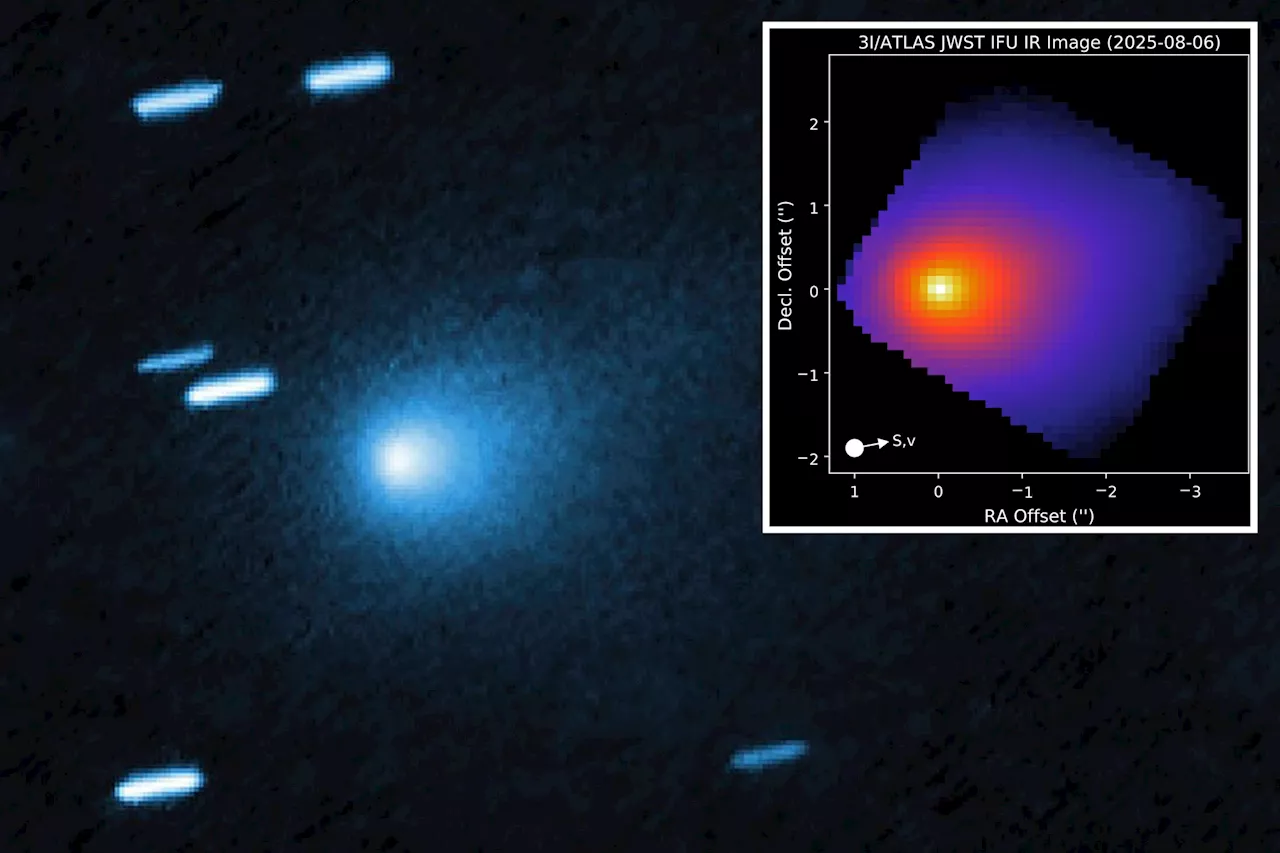Science
Interstellar Object 3I/ATLAS Emits Unprecedented Metal Alloy

An interstellar object named **3I/ATLAS** is capturing the attention of astronomers for emitting a metal alloy not previously observed in nature. According to **Dr. Avi Loeb**, a Harvard astrophysicist, new images from the **Keck II Telescope** in Hawaii reveal that 3I/ATLAS is producing a plume containing approximately **four grams of nickel per second**. Notably, there is no evidence of iron, which is unusual for comets.
The alloy produced by this object is identified as **nickel tetracarbonyl**, a substance that has only been seen in human manufacturing, particularly in the production of metal coatings for industries such as aerospace. Dr. Loeb emphasized the uniqueness of this discovery, stating, “There is only one place where that is known to exist and that is in industrially produced nickel alloys,” asserting, “This was never observed for any other object.”
Unusual Characteristics of 3I/ATLAS
Further analysis of **3I/ATLAS** reveals another intriguing aspect: it lacks a traditional cometary tail. “We usually see beautiful tails extending from the object away from the Sun, and in this case there was no evidence for such a tail,” Dr. Loeb noted. Instead, images from the **Hubble Space Telescope** show a stream of materials, weighing approximately **330 pounds per second**, directed towards the Sun.
This stream primarily consists of carbon dioxide and water, alongside trace amounts of cyanide and nickel, but notably absent is iron. Dr. Loeb raised questions about this unusual jet, asking, “Why are we seeing a jet pointed at the Sun? A stream of material in the direction of the Sun?”
Anticipation for New Data
Skywatchers globally are eagerly awaiting additional images captured by the **Mars Reconnaissance Orbiter’s HiRISE camera** taken between **October 4 and 7, 2025**. However, the release of this data has been delayed due to the ongoing government shutdown, affecting the **NASA** communications department. Dr. Loeb expressed frustration, stating, “Who cares about the communication departments? We want to see the data from the scientists.”
The upcoming images from the HiRISE camera are expected to provide the closest and most detailed observations of **3I/ATLAS** during its brief passage through our inner solar system. As researchers continue to analyze this extraordinary object, its unique properties may offer new insights into the composition of materials beyond our solar system.
With the scientific community closely monitoring **3I/ATLAS**, this enigmatic interstellar traveler holds the potential to reshape our understanding of both cometary phenomena and the broader landscape of celestial objects.
-

 Business5 days ago
Business5 days agoUK to Finalize Stablecoin Regulations by 2026, Boosting Crypto Sector
-

 Business5 days ago
Business5 days agoU.S. and U.K. Target Cybercriminal Networks, Seize $15 Billion
-

 Lifestyle5 days ago
Lifestyle5 days agoKISS OF LIFE’s Natty Dazzles in Micro-Shorts at Seoul Event
-

 World5 days ago
World5 days agoMilitary Artillery Plan Sparks Safety Concerns Along California Highway
-

 Sports5 days ago
Sports5 days agoDomenico Doran’s Stellar Performance Leads Bishop Amat to Victory
-

 World5 days ago
World5 days agoTrump Signals Reluctance to Sell Tomahawk Missiles to Ukraine
-

 Business5 days ago
Business5 days agoCalifornia to Eliminate All Plastic Bags from Stores by 2026
-

 Entertainment5 days ago
Entertainment5 days agoLouisiana Senate Raises Concerns Over Medicaid Cuts Amid New Bill
-

 Entertainment5 days ago
Entertainment5 days agoUtah Communities Rally as Government Shutdown Strains Resources
-

 Science2 days ago
Science2 days agoAncient Dinosaur Discovery in Argentina Reveals Evolutionary Insights
-

 Sports5 days ago
Sports5 days agoTrade Low, Trade High: Key NHL Players to Consider Now
-

 Health2 days ago
Health2 days agoUncovering the Hidden Link Between Knee Pain and Hip Issues









